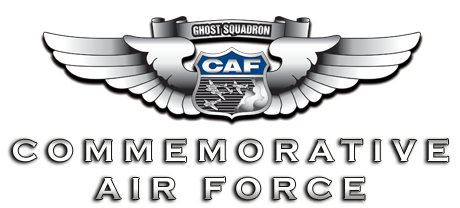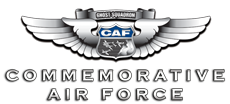BT-13 Houston Wing

Description:
Base:
West Houston Airport, Houston, TX
Website:

| BT-13 Specs | |
|---|---|
| Role | Trainer |
| Manufacturer | Vultee Aircraft |
| Introduced | Jun 1940 |
| Power | 1 × Pratt & Whitney R-985-AN-1 nine-cylinder air-cooled radial engine, 450 hp |
| Length | 28 ft 10 in |
| Height | 11 ft 6 in |
| Wingspan | 42 ft 0 in |
| Range | 725 mi |
The Consolidated Vultee BT-13/BT-15/SNV family of Basic Trainers first entered service in 1940, and was finally retired in the late 1960’s. The Houston Wing aircraft is a BT-13A; about 7,000 of this model were built. It is estimated that only about 40 remain in flying condition today. The Houston Wing BT-13 spent 30 years as a public attraction on top of a Utah welding shop before being rescued and returned to flight status.
A standard BT-13A is equipped a 450 HP Pratt & Whitney R-985-AN-1 radial engine which drives a fixed-pitch propeller (the Houston Wing’s BT-13A has a variable-pitch prop). The landing gear is not retractable, and is not equipped with fairings. Due to the large number of BT-13s produced, Pratt & Whitney was unable to supply enough engines to equip the full production. The BT-15 is the same basic aircraft as a BT-13, but is equipped with a 450 HP Wright R-975-1 radial engine.
Although the ‘official’ name of the BT-13 is the “Valiant”, it is commonly referred to as the “Vultee Vibrator”. The origin of the “Vibrator” nickname is unclear, with several different stories being credited:
When approaching a stall, the airplane shudders or vibrates noticeably During more “adventurous” maneuvers, the canopy rattles or vibrates The powerful radial engine and fixed-pitch prop caused all the windows on the base to vibrate whenever a BT-13 took off
The Vultee BT-13 Valiant was an American basic trainer aircraft from the World War II era, produced by Vultee Aircraft for the U.S. Army Air Corps and later the U.S. Army Air Forces. A later variant of the BT-13 used by the USAAC/USAAF was designated the BT-15 Valiant. In contrast, an identical model used by the U.S. Navy was referred to as the SNV and was utilized to train naval aviators for the U.S. Navy and its sister services, the U.S. Marine Corps and the U.S. Coast Guard.

